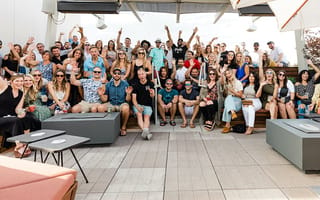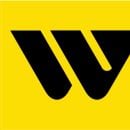If you’re reading this, chances are you’re seriously considering a new career.
Employers are feeling the shockwaves of The Great Resignation, a period of mass departures that have left many companies across the country scrambling to find new talent to join their ranks. And we may not have seen the full impact just yet: According to a research report released by Microsoft earlier this year, more than 40 percent of employees are weighing leaving their employer in 2021.
In their new career, workers want a say in the way they do their work, the ability to make an impact, and a team to support their career ambitions, among other things. While some employers haven’t made the jump to meeting workers where they are, others have taken notice.
Built In Colorado recently interviewed seven technical leaders at businesses across The Centennial State who are looking for eager, energized engineering talent to join their companies. They explained how their engineering teams are unique, what challenges their team faces, and the tech tools they utilize to get it all done.
And perhaps the best part? Between the seven companies, there are more than 50 open engineering roles.
What they do: Western Union is a global leader in money movements and payments, enabling people, businesses, NGOs, financial institutions and other organizations to send money wherever they need to, including across borders
Their tech stack: “Our team works on a wide range of technologies and platforms, from Mainframe and Cobol to cloud applications in Java, .Net, Angular and everything in between,” Hayrynen said. “We are constantly innovating and adopting technology to improve reliability and security while reducing operational costs, whether it is adopting the latest cloud capabilities or optimizing mainframe hosting. We are working on migrating and architecting new products and solutions in AWS and Google Cloud, building microservices using resources such as Fargate, Kubernetes and lambda, as an example. We are most excited about the continual evolution.”
Scalable and secure solutions: “We are working on several major transformation projects within and across several regions, including the Walmart implementation, ONE Platform, and Settlement transformation. One of the most challenging aspects is building scalable and secure solutions to accommodate for the growth required.”
Collaborating on local solutions: “Like WU customers, we are a diverse team spread across the globe, from Russia to Peru, Brazil, Italy and India. Being globally separate, we continue to work on unique local solutions while still collaborating. It is not often that one can work with people with such different backgrounds and perspectives!”
What they do: Angi’s home services website helps homeowners connect with home service professionals for a wide variety of projects and services.
Their tech stack: “The most exciting evolution to Angi’s tech stack is the introduction of our Java Kubernetes microservices that quickly and easily enable engineers to build and deploy applications to AWS,” Johnell said. “This new stack includes Java Spring Boot, Postgres powered by Aurora, Redis powered by ElastiCache and DynamoDB. Local development is fully containerized, clients are auto-generated and include Resilience4j-based fault tolerance, and database migrations are automated through Flyway. The applications are served on a fully managed, cloud-based compute platform with support for auto-scaling, multiple availability zones, and built-in logging and metrics that are queryable through Grafana.”
Strategically communicating: “Given Angi is a unification of several brands (Angie’s List, HomeAdvisor and Handy), how we think about communications sent out to our customers and professionals needs to be reimagined. The Foundation engineering team is taking steps to modernize how Angi approaches communications. The Java ecosystem does not offer an out-of-the-box solution for delaying events with an exactly-once delivery guarantee. The Angi Foundation group is developing a reusable pattern and library for delaying messages (or events) through a combination of AWS Step Functions and SQS. With this new toolset, engineers will be capable of easily delaying any sort of event through the inclusion of a custom library and a few Terraform changes.”
Accelerating product development: “Moving from a traditional product engineering organization to an internally-focused product engineering organization, Foundation, has been an eye-opening and challenging experience for me. The Angi Foundation’s charter is to accelerate product development within Angi product engineering teams. Our users are product engineers at Angi. Actually discovering the opportunities and prioritizing the work the team will take on is a constant challenge. The payoff, however, is really motivating. We love making the lives of our engineers better so that they can better serve our customers and professionals.”
What they do: Hotel Engine is a hotel booking platform that aims to make lodging management easier for businesses.
Their tech stack: “My team is primarily tasked with pulling high-volume functionality out of our legacy monolith,” Weller said. “We take a lot out of Rails and convert it into Node.js lambda functions, leveraging other AWS resources. I personally am a Node.js guy, though I branch off into both our React app and Rails code for small tickets. My favorite piece of tech we use is the serverless framework. Deploying to AWS is so much easier. I cannot imagine managing all the stages and services needed for our business through Amazon directly.”
Seeing impact firsthand: “Currently, we’re pulling our search routes out of a Heroku server running hapi.js and putting them into a series of lightweight lambdas. It gives us the opportunity to clean up a bunch of code, and that’s super satisfying. It’s basically the coding equivalent of doing a heart transplant. It’s fun to be working on something that basically connects the whole app together. You really see the impact of the work firsthand.”
A team that cares: “Most of my professional career has been in scrappy, small companies. I was a co-founder of an animation software startup, I founded and ran a comedy theater for five years, and I worked as a freelance contractor doing web development and content management. When I started at Hotel Engine, we only had 50 people at the company, and that was a huge increase in the size I was used to working for.”
“All that said, I don’t feel like Hotel Engine feels a stereotypical corporate gig. I’m a software engineer but I have direct communication with the CEO and the VP of engineering regularly. They ask me personally how I’m doing and what I think would make things better. I also really care about my direct team. We like talking, and we’re all passionate about doing good work. Our meetings absolutely do not suck. We get in there, help each other out, and more often than not, have a good laugh.”
What they do: Housecall Pro is SaaS platform aimed at helping homeservices professionals streamline and scale their businesses.
Their tech stack: “For web, we use Ruby on Rails on the back end with React and Redux on the front end,” Ghamedi said.
It’s all in the data: “I recently joined the reporting team as their tech lead. The most interesting challenge for this team is allowing our service pros to see their data in the most beneficial way possible. What is important to one company may not be important to another. So how do we take all this data we have about their jobs, estimates, etc., and display it to them in a way the fits their business? How do we use the current tech stack to accomplish this? Are we bound to our current tech stack? And in what ways will our current implementations scale?”
Never stay stuck: “When I first started as an intern here, I was encouraged to ask questions all the time. The goal was to try to figure it out on your own, but don’t stay stuck for more than 15 minutes. If I felt unsure of something, I could do research on my own and then ask them for help or their opinion. I practice this now that I am mentoring engineers. It is always valuable to encourage the engineers to do something on their own, but not to where they are stuck for hours on a problem. Staying stuck doesn’t do anyone any good.”
What they do: Parsyl is an insurance technology company that delivers data-driven cargo insurance solutions for essential supply chains including vaccines and medicines, perishable foods and other sensitive goods.
Their tech stack: “We have a very wide tech stack and build hardware, firmware and software in-house,” Trewartha said. “The core components consist of a serverless API, data analysis and reporting pipelines, various databases, and our data lake. For our web app, we use a Vue.js-based app for viewing and managing data that’s been collected and stored in the back end. for data analytics, we use analytics tools, including ML models that help us extract meaningful data and trends in data for both customers and internal use.”
Strengthening global health supply chains: “I’m excited about a current project in response to the Covid-19 pandemic. Thawed ultra cold chain vaccines, including the Pfizer BioNTech vaccine, each have unique storage and usage requirements and must be carefully managed to remain effective. We saw a real-life, critical problem, and built a Smart Countdown tool to automatically track remaining shelf life. Now, frontline workers can simply scan a QR code and check not only the temperature of vaccines but how many days of shelf-life remain before they must be discarded. The Parsyl Smart Countdown tool is currently being utilized in several countries across Africa. Knowing that our day-to-day projects make a difference is what I enjoy most about my work at Parsyl.”
Ending the days of ship and pray: “We assemble passionate people who are driven by the idea of building a product that can improve the safety and performance of the products we all rely on, from the foods we eat to the medicines we need. Unique to the team at Parsyl is the camaraderie. Startups are usually close by necessity — resources are limited, projects and priorities change often and quickly, and consistent communication is key to success.”
“No matter how many urgent projects someone has on their to-do list, everyone at Parsyl is always willing (and truly gets excited) to help out a colleague and lend a hand, provide feedback, share guidance or just bounce ideas off of. There are a number of opportunities to spend time with each other outside work. Even though we work hard, we make sure to carve out time for some fun too!”
What they do: Enquire is a CRM, marketing automation and contact center solution provider in senior living and post-acute care.
Their tech stack: “The tech stack for our web app is based on C#, .NET and Microsoft SQL with Vue.js and JavaScript for the front end and is hosted in Azure,” Latsch said. “Personally, I have been using Microsoft Azure Storage Explorer a lot more recently to easily navigate our blob containers and queues. We’re currently excited to be leveraging more Azure services to increase our scalability and incorporate more machine learning into our software.”
Working through technical challenges: “One challenging project has been our e-fax microservice that imports data from PDF images of fax documents. Unlike the data that we typically work with, the OCR text is completely unstructured and requires the code to parse and organize it into a more machine-readable format before it can extract relevant information.”
“With wide variations in document content and formatting, there isn’t a single universal strategy that can work for every possible document. Rather, the code uses multiple strategies to find potential values and then calculates which of those are the most relevant. Altogether, the challenges are very different than what I typically encounter when working with structured and semi-structured data.”
An emphasis on versatility: “We’re a small team that punches above its weight because of our mindset that encourages experimentation, open learning and collaboration. Whether it is during our weekly cross-training meetings where developers get an opportunity to discuss their recent work or a spontaneous and informal brainstorming session, we’re always sharing ideas and knowledge and building a more cohesive team in general.”
What they do: Youtopia is a health and wellness company that aims to make the journey to age 120 a reality through its steps: Optimal Nourishment and Vibrant Health.
Their tech stack: “Youtopia leverages cloud-native and native mobile development technologies to build applications with distributed microservices architecture on top of Azure,” Yueh said. “After exploring Azure Service Fabric and Azure Kubernetes Service (AKS), we ultimately chose AKS for its scalability and flexibility.”
“With .NET Core powering most of our application services, we are exploring Databricks, Azure ML Studio, TensorFlow and PyTorch for several machine learning model-driven services. We use Swift for our iOS development, Kotlin for Android and Angular for Web UI. Our application persistence components primarily consist of Azure SQL and Cosmos DB, but we also have room for Redis and ElasticSearch for caching and other acute use cases.”
Personalized nourishment optimization: “This project involves evaluating numerous individual health aspects to capture each Youtopian’s current picture of health and vast nutritional science methodologies to help Youtopians achieve their ideal picture of health. It involves data science, microservices, and a profound challenge to simplify engagement with something very complex. It is also gratifying as it serves the common good.”
Domain-driven design: “Our approach to product engineering is balanced across product management, product design, and development to ensure we engage domain experts and stakeholders. We believe that all software models something in real life, and as George Box said, ‘All models are wrong, but some are useful.’”
“In practicing domain-driven design (DDD), we invest in exploring domains with activities like event storming, capture (and adopt) ubiquitous language, and engage entire product engineering teams throughout the process. We capture, track and manage the tech debt we intentionally accumulate to ensure our products (and their codebases) never become something we dread.”


















